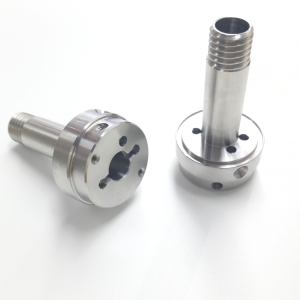Accuracy and precision are both highly important factors in machining, and both quality attributes are necessary for successful machining. To achieve high-precision CNC machining, several factors such as tool selection, spindle speed, cutting depth, and machine rigidity must be considered.

What is CNC Turning?
CNC turning is a machining process that uses computer-controlled machines to shape and form plastic and metal materials. A CNC turret lathe is used to rotate the material while a cutting tool is fed into the rotating material to shape it into the desired form. The CNC turret lathe is programmed with instructions and controls the depth, speed, and feed rate of the cutting tool, as well as other processes, to create complex shapes and holes in the work piece. CNC turning is typically used for mass production of small parts, such as screws and bolts.
What materials can be machined by CNC Turning?
Materials that can be machined by CNC turning include steel, aluminium, brass, copper, bronze, plastic, glass, and composites. Some materials, such as ceramic and high performance alloys, may only be machined on specialty machines. The type of materials and the complexity of the part shape will determine the best machining process for a specific job.
What are the benefits of using CNC Turning?
The benefits of using CNC turning include greater accuracy, repeatability, and consistency of parts due to the precision of computer-controlled machining; increased speed of production due to the automated processes; and enhanced safety due to the lack of human intervention. Additionally, CNC turning is a cost-effective way to manufacture parts in large quantities with minimal wastage.
CNC turning uses a computer-controlled lathe to spin the material while a cutting tool is fed into the rotating material for precision cutting and machining. The programmable lathe is set up with instructions on how to spin, the cutting tool type, depth, speed, feed rate, and other processes required to produce a part. The cutting tool is guided precisely at predetermined angles, depths, and speeds, while the material is rotated, to achieve the desired shape and features. Once a cutting cycle is complete, the part is removed and the next cycle begins. During the CNC turning process, a material-removal technique such as drilling, milling, cutting, and grinding may be used. The resulting part is typically highly accurate, consistent, and repeatable.
